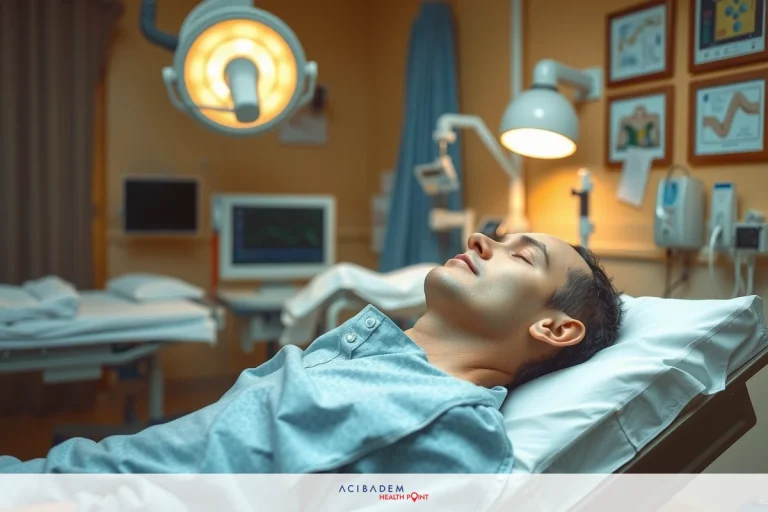What is the Downtime for Revision Rhinoplasty Surgery
What is the Downtime for Revision Rhinoplasty Surgery To grasp the intricacies of revision rhinoplasty, one must first comprehend its nature. As a corrective measure following initial rhinoplasty, it aims to rectify aesthetic or functional deficits left unresolved or created by the prior surgery. Navigating through this process can be daunting—time and patience become your allies in stride with recovery.
The road to recuperation post-revision rhinoplasty is often paved with questions about downtime—the length of healing time—and ways to manage discomfort effectively during this period. It’s crucial to note that each person heals differently; some may breeze through their recovery while others might require a more extended convalescence. Despite these differences, certain fundamental principles guide post-operative care and encourage optimal healing.
What is Revision Rhinoplasty?
Revision rhinoplasty, also known as secondary nose surgery, is an intricate procedure that demands meticulous attention to detail and a profound understanding of facial aesthetics. This surgical operation seeks to correct any issues following the initial rhinoplasty—whether they be functional problems affecting breathing or dissatisfaction with aesthetic outcomes. It’s not uncommon for patients who have undergone primary nose surgery to find themselves requiring this corrective procedure; in fact, revision rates can vary widely depending on numerous factors.
The complexity of revision rhinoplasty lies in its twofold challenge: rectifying the prior surgeon’s errors while achieving the patient’s desired results without compromising nasal function or stability. The operation requires identifying what went wrong during the first surgery—a task often complicated by scar tissue and alterations from previous changes made to the delicate structures within the nose—and creating a plan that will ensure successful correction alongside improved healing and recovery processes.
Considering downtime—the period necessary for healing—in relation to revision rhinoplasty highlights another layer of its complexity. Downtime is typically longer than with primary procedures due to multiple factors including more extensive surgical work, increased swelling and bruising, and a greater need for restorative care post-surgery. Nevertheless, it’s important for patients considering this option not only understand what revising their original rhinoplasty entails but also prepare mentally for a potentially lengthier recovery timeline.
Recovery Process
The journey of recovery following revision rhinoplasty is as unique as the patients themselves. A myriad of factors, such as individual health status, surgical complexity, and adherence to post-operative care instructions, all contribute to the duration and nature of the healing process. Here’s an overview of what one might expect during this crucial period.
During the immediate post-surgery phase—which encompasses roughly the first week—patients may experience some degree of discomfort alongside noticeable swelling and bruising around the nose and eyes. Splints or packing inside your nose are often necessary to support newly reshaped structures; these are typically removed after a week.
Next comes reduced but persistent swelling that gradually subsides over several weeks to months—it’s important for patients not to rush this phase but instead allow their body ample time for natural healing.
During this time, it’s also common for sensations in or around your nose, such as numbness or tingling sensation, to fluctuate.
A major milestone in recovery occurs at approximately one year post-surgery when most residual swelling has

resolved and you can see a more accurate representation of your new nasal shape. Keep in mind that subtle changes will continue even beyond this point due to slow collagen remodeling within deeper nasal tissues.
Throughout each stage of recovery from revision rhinoplasty surgery—the initial downtime immediately after surgery through gradual healing leading up towards that exciting reveal—remember patience is a virtue: good things come in time!
Managing Discomfort
Following revision rhinoplasty, patients will inevitably find themselves grappling with some degree of discomfort—a natural outcome of any surgical procedure. Understanding how to effectively manage this pain can significantly enhance the overall recovery experience and facilitate healing. Pain management is not a one-size-fits-all approach; it requires discernment, patience, and proactive measures.
Medications play a substantial role in post-operative care—they’re typically prescribed by your surgeon to alleviate acute pain immediately following surgery. It’s paramount that these medications be taken as instructed—abiding by dosage guidelines ensures effective pain control while minimizing potential side effects. However, keep in mind that medication is only part of the equation; non-pharmaceutical interventions also prove beneficial in managing discomfort during the recovery process.
Cold compresses are often recommended for use around (not on) the nose to ease swelling and provide relief from discomfort—especially during those first critical days after surgery when swelling peaks. Resting with your head elevated can help reduce blood flow to the area thereby easing inflammation and associated discomfort too. Finally, consider relaxation techniques such as deep breathing or meditation; these strategies not only distract from physical discomfort but promote an overall sense of calm—an invaluable asset amidst what might feel like an arduous journey towards full recovery.
What is the Downtime for Revision Rhinoplasty Surgery: Frequently Asked Questions
How long does it take to fully recover from a revision rhinoplasty surgery?
The recovery timeline for revision rhinoplasty can vary widely depending on factors such as the complexity of the surgery, individual healing rates, and adherence to post-operative care instructions. While acute swelling and discomfort generally subside within a few weeks, subtle changes continue over many months—sometimes even up to a year or longer.
Can I use pain medication during my recovery period?
Yes, your surgeon will likely prescribe medications to manage pain in the immediate aftermath of the operation. It's important that you follow dosage guidelines carefully for effective relief while minimizing potential side effects. Remember also that non-pharmacological strategies such as cold compresses and relaxation techniques can further aid in managing discomfort.
What steps can I take at home to facilitate healing after my surgery?
Home care plays an integral role in your recovery journey. Resting with your head elevated, applying cold compresses around (not on) your nose area, adhering strictly to prescribed medications and their schedules are all part of this process. Moreover, maintaining overall good health through balanced nutrition and adequate hydration supports systemic healing too.
Will there be visible scarring following revision rhinoplasty?
Scarring is typically minimal with skilled surgical technique coupled with diligent scar care practices during recovery—including protection from sun exposure which can darken scars initially before they fade naturally over time.











